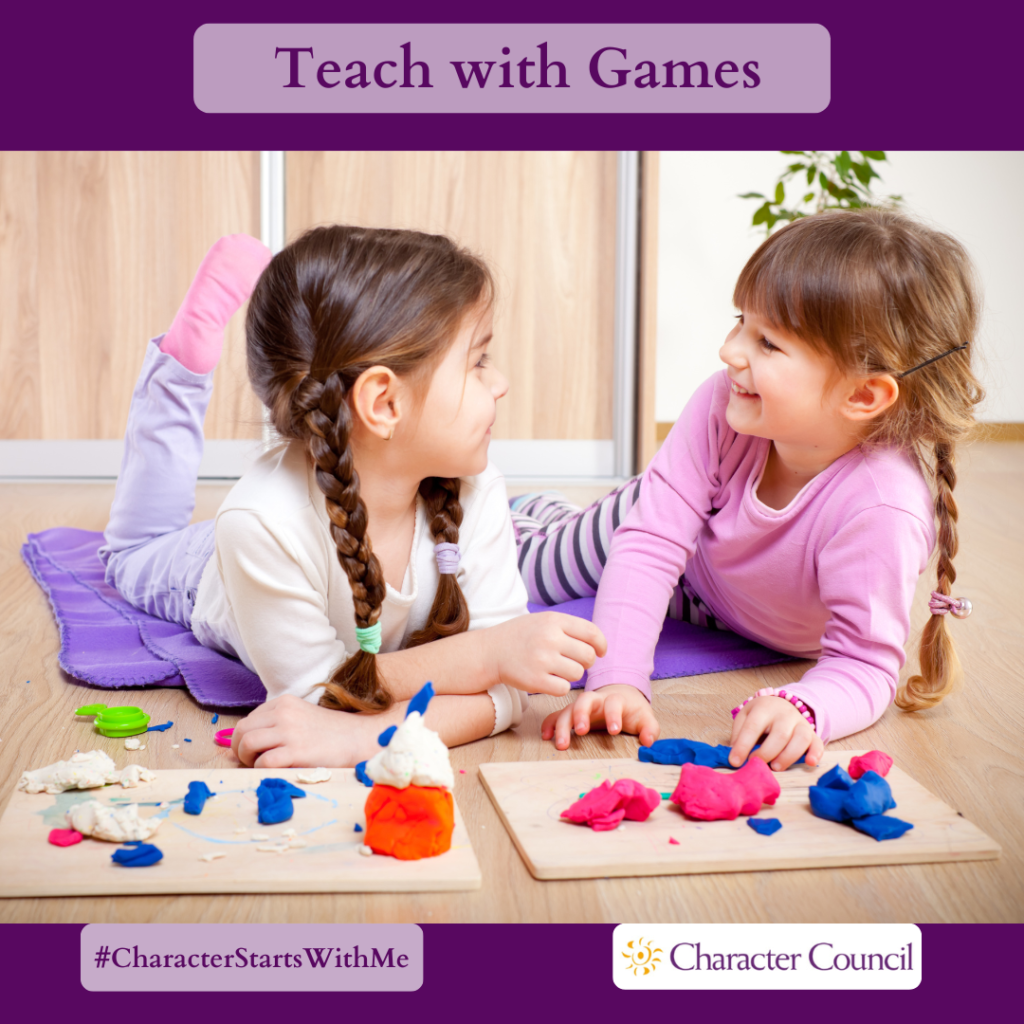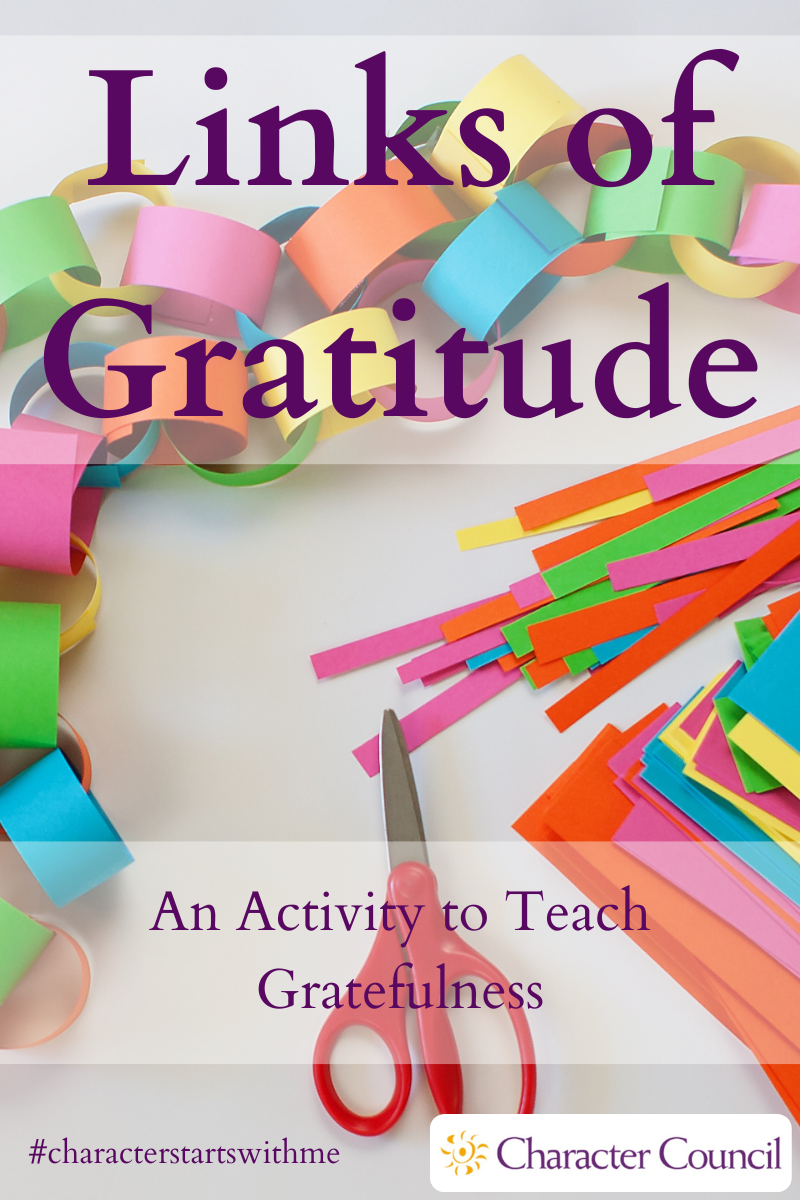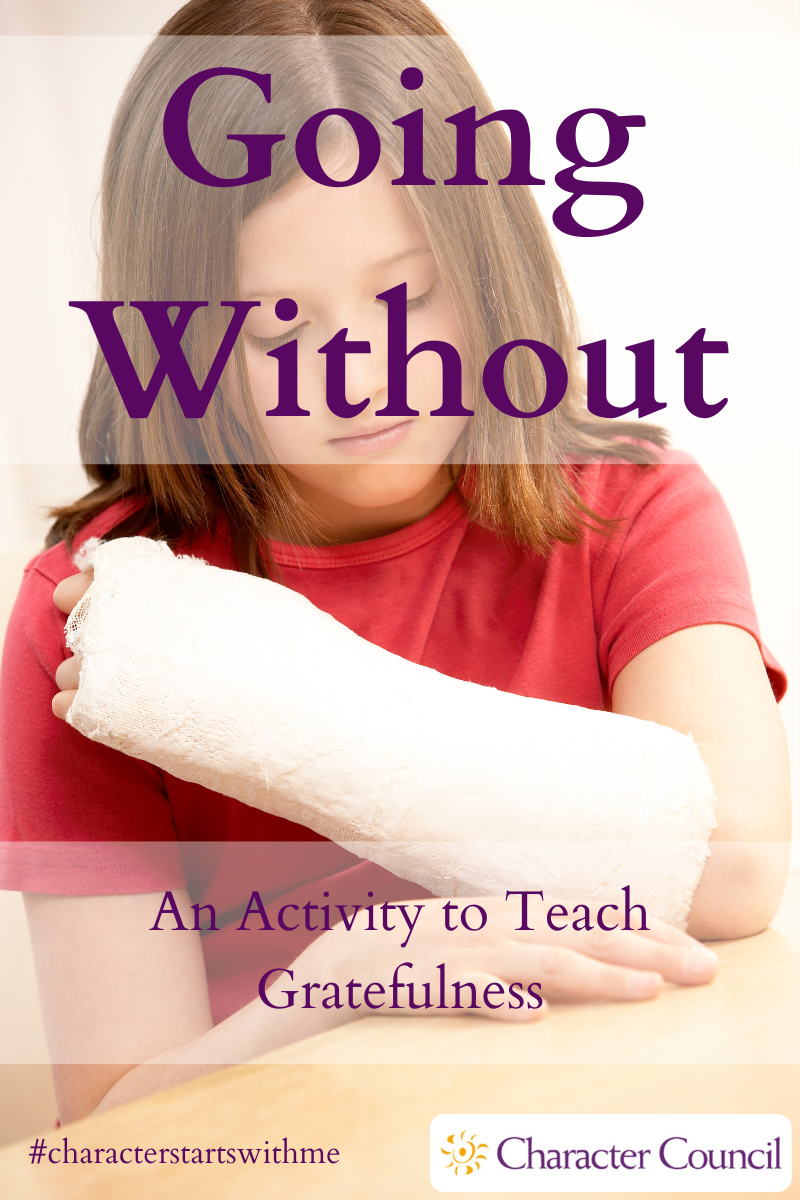
Gratefulness Activities
The activities here are fun ways to teach character. The game aspect makes the lesson more memorable. Each activity has processing questions at the end. Without processing the activity, the exercise is just a game. To make it a stronger lesson when you process it, relate the character quality to a core value that your organization promotes.
Consider picking a student to run the activity. You will need to give them time ahead of the activity to prepare. Another option is to pick a few students to run the activity for a younger classroom after you have run it for your class. Encourage your students to repeat it in the home for younger siblings or even parents.


Links of Gratitude
Every day for a week or the whole month, have each student write one person for which they are grateful on a strip of paper and why they are grateful, and make a chain in your classroom. Use colors appropriate for the season. Have each student share their gratitude as they place their link on the chain. See how long the chain is at the end of the week/month. For non-writers, you can have them draw a picture of the people for whom they are grateful and make a quilt of gratitude.
After you have done this for a few days, ask the students if anyone of them shared their gratefulness with the actual person they named on a link. If so, ask them how the person reacted and how they felt expressing gratitude. Was it easy? Did it get easier the more you did it? If they haven’t expressed their gratefulness, encourage them to do so.

Begin a discussion in class about a time when storms knocked out power for an extended period of time. Ask them what they missed most about not having electricity. Ask about if there has been someone in their life who has taken a long trip or was ill for a long time. How did it feel to go without seeing that person? Did they appreciate them that much more when they returned? Have any of them ever broken a bone or sprained a joint that required a cast or a brace that prevented you from using the injured body part? What accommodations did they have to make to not use the injured part? Did it put a strain on other working parts? How did they feel when the use of it returned? Ask if anyone has lost a toy or another treasured belonging? How did it feel to know that something important was lost? What did it feel like when you found it again? Did you treat it any differently? Has anyone been lost or separated from their parents in a public place? How did it feel to not know anyone and not be able to locate the person you were with? Did you actively look for them or stand still and hope they found you? What did the reunion with them feel like? Did you hold onto them even tighter?
To process this activity, ask these or similar questions:
- Did everyone have an example of at least one of the discussion items?
- When others shared about losing something could you feel that loss and the joy when it was found?
- Did some of you have very similar stories?
- Can you think of someone or something that you have today that you would miss greatly if they or it were gone?
- All of these examples help us to see people and things that we take for granted. Instead of waiting for a time when something or someone is gone, tell them now that you appreciate them.

Yuck Presents
This exercise is intended to give students practice at gracefully accepting gifts they view as less than desirable. Find some pictures of items that would make “yuck” gifts to your students such as ugly sweaters, kitchen appliances, or toys that are intended for a much younger child. Place each picture in an envelope and draw a gift bow on the outside. Have the students pick an envelope and open the gift. Their challenge is to accept it gracefully and gratefully. Model this with an envelope containing a gift that you don’t really want and show how it’s done. You may also choose to bring in some gifts from your own “gift dungeon” to further demonstrate (as long as they aren’t from someone in the school community.) If there isn’t time to make an envelope for each student, make enough for about 1/3 of the class. When all of those gift envelopes have been used have the students return the gifts to the envelopes and mix them up and re-use them. Make sure to instruct the students that they must be truthful and kind in what they say to the giver. Appreciation for a gift should be framed as gratefulness to the individual and not the value of the gift. Some examples are below:
For a plain or ‘ugly’ sweater: “Thank you, Aunt Betty, for the warm sweater. It will certainly keep me toasty this winter. I appreciate your thoughtfulness.”
For a toy that is for a younger child: “Thank you, Uncle Roger, for the cool toy truck. Now when playing with my little brother I can have my own truck. I’ll think of you when we play with it.”
For utilitarian socks: “Thanks, Grandma for the socks. You never forget my birthday. I love you!
If they give a good response but their tone or inflection doesn’t match, ask them if their attitude said the same thing as their words and give them a chance to re-state the Thank You. It is important to stress sincerity in their gratefulness.
To process this activity, ask these or similar questions:
- Have you ever received a Yuck gift? Were you grateful anyway?
- Did this exercise give you some ideas of what you could say?
- The next time you see someone else be ungrateful for a gift, look at the giver for their reaction and remember to be grateful when you get a gift.